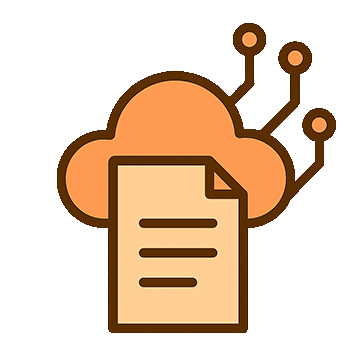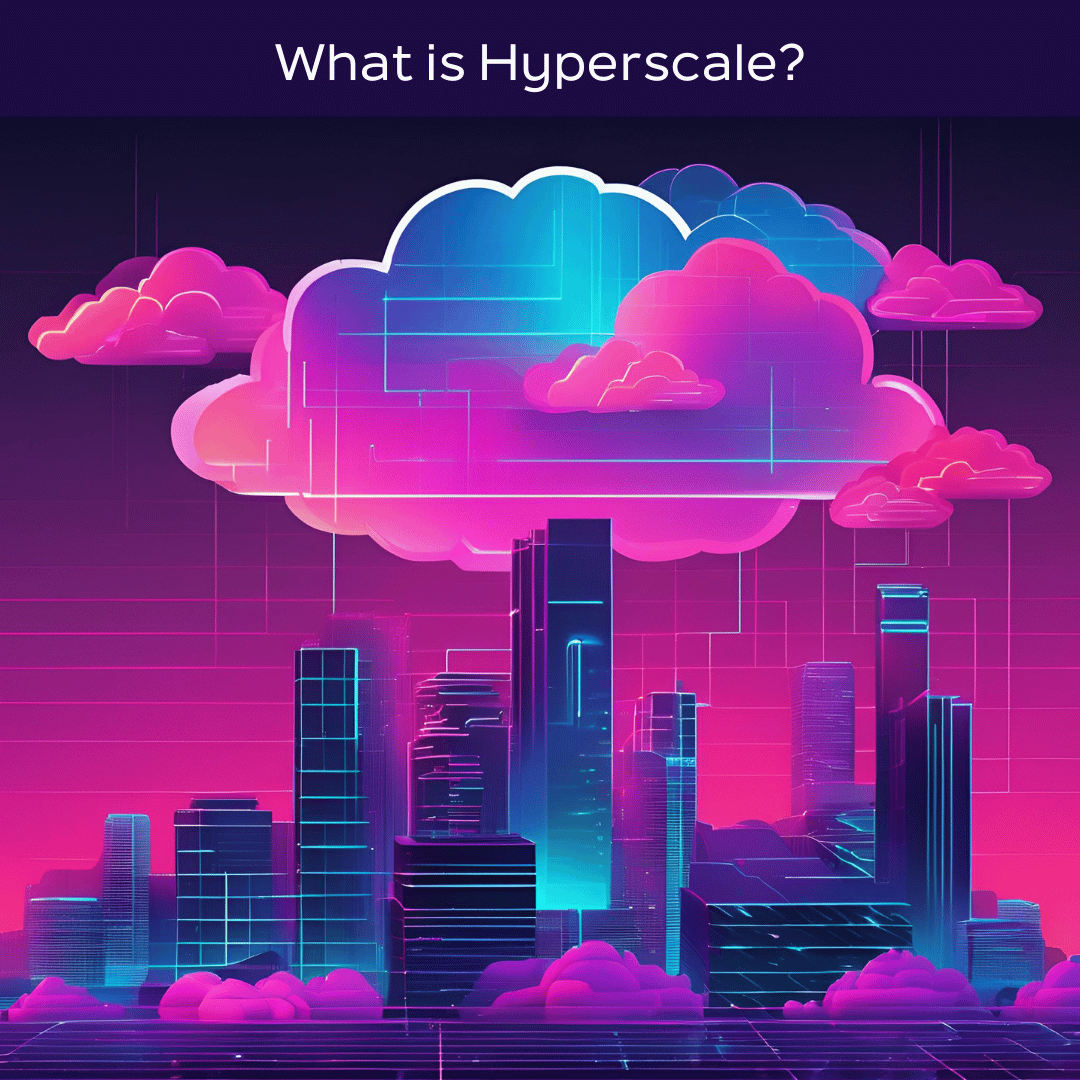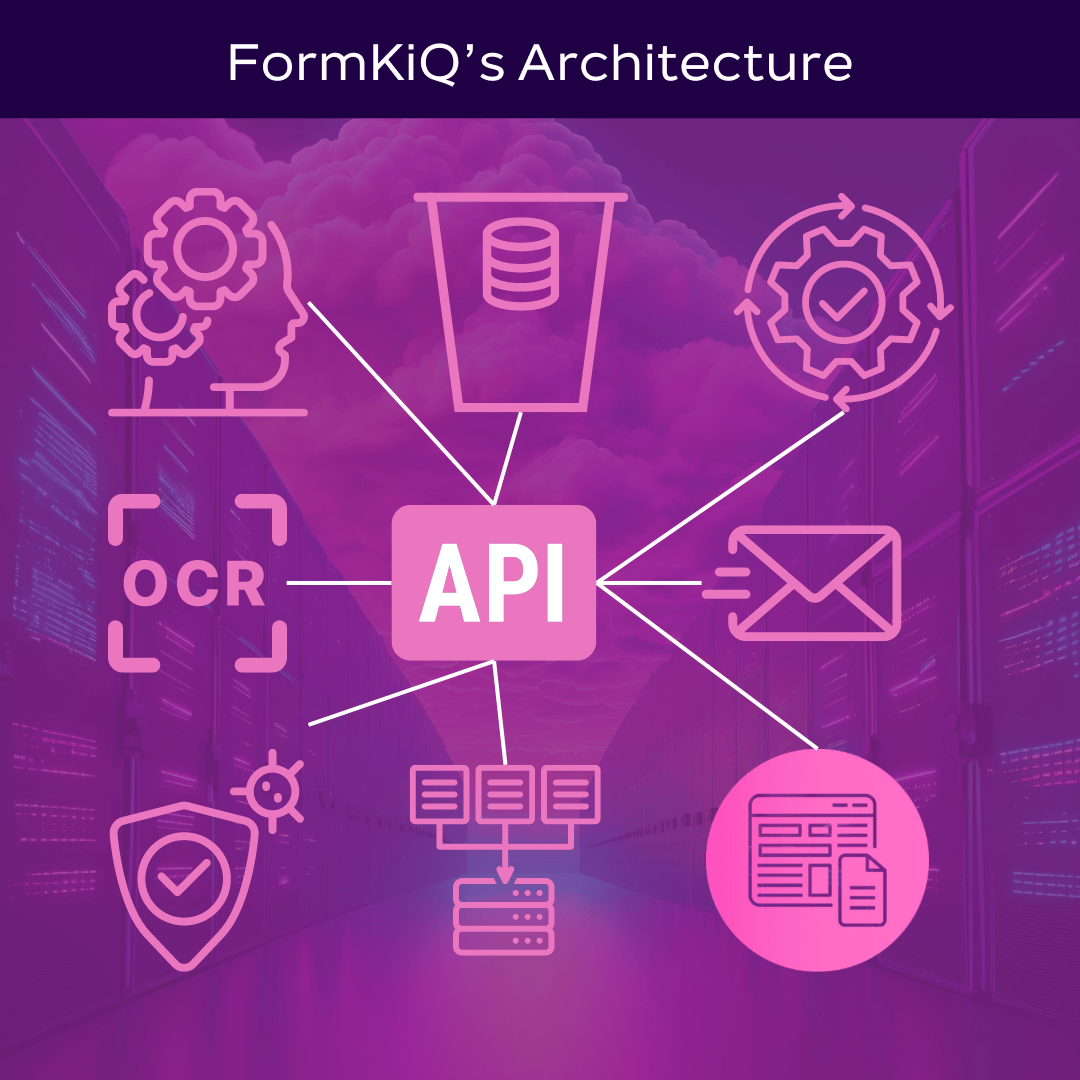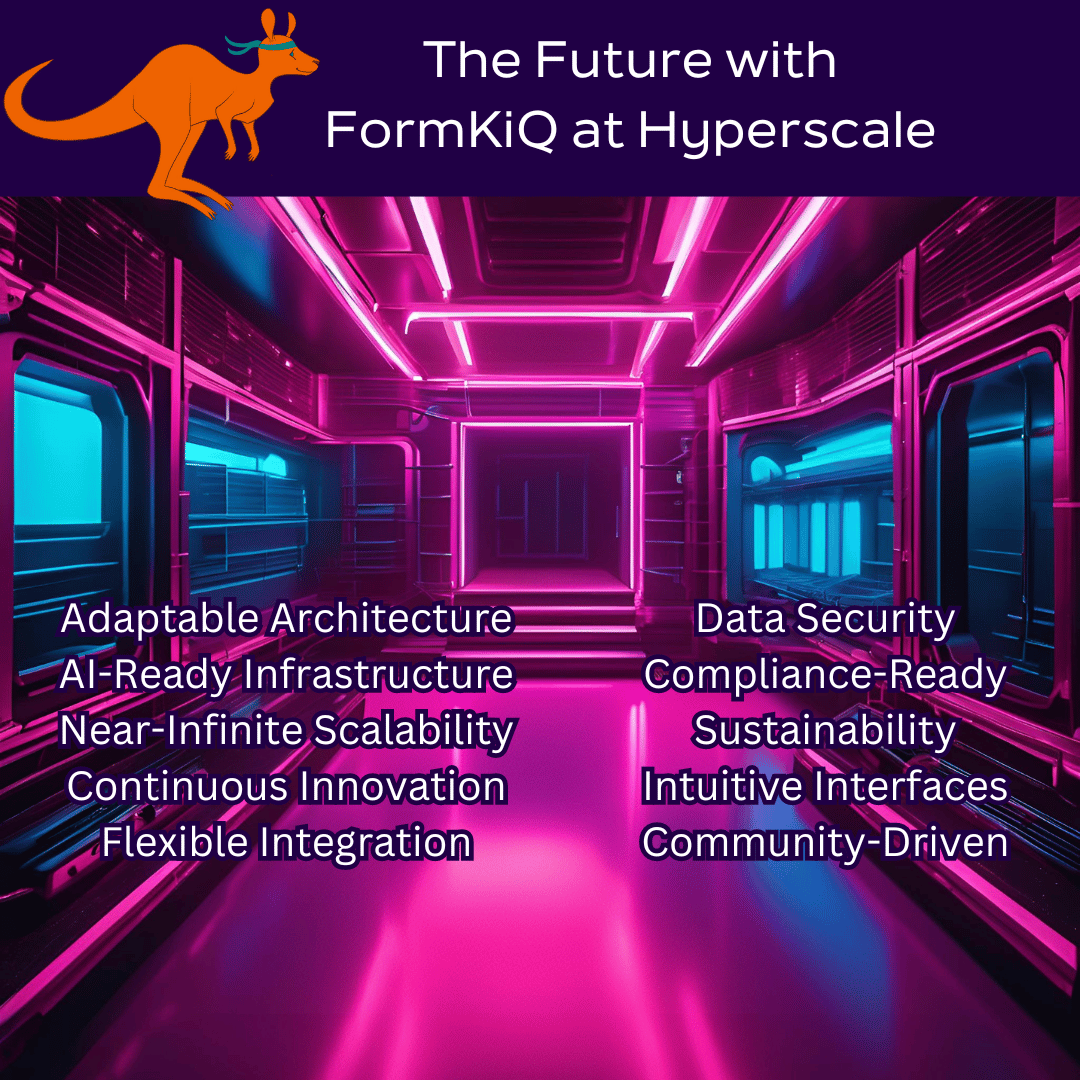FormKiQ is a document management platform designed to meet the evolving needs of modern businesses in an accelerating environment. And one of the newer and more pressing needs in an AI-enabled future is hyperscale.
Let's look into hyperscaling and dig into how FormKiQ's architecture and features position it as a hyperscale-ready solution, capable of handling the most demanding document management challenges.
What is Hyperscale?
Hyperscale refers to the ability of an architecture to scale appropriately as increased demand is added to the system. This concept goes beyond traditional scaling by orders of magnitude, allowing systems to handle millions of users or billions of data points efficiently.
Hyperscale providers (or "hyperscalers") are generally the large cloud services such as Amazon Web Services (AWS), Microsoft Azure, and Google Cloud Platform (GCP), with some on-prem and edge hyperscalers as well, like HP's GreenLake.
Key characteristics of hyperscale systems include:
-
Extreme scalability:
The ability to grow from handling thousands to millions of operations seamlessly.
-
Elasticity:
Dynamically adjusting resources based on current demand.
-
High Performance:
Maintaining speed and efficiency even under enormous loads.
-
Distributed Computing:
Spreading tasks across multiple machines or data centers.
All of these characteristics have been key in the growth of software-as-a-service and other cloud-enabled applications over the past 5-7 years, but with the increased introduction of AI into workloads, the important of hyperscaling is growing.
The importance of hyperscale architecture becomes increasingly critical with AI:
-
Data Volume:
AI, particularly machine learning models, requires vast amounts of data for training and operation. Hyperscale systems can ingest, process, and store petabytes of data efficiently.
-
Computational Power:
AI algorithms, especially deep learning models, demand significant computational resources. Hyperscale architectures provide the necessary processing power through distributed computing.
-
Real-Time Processing:
Many AI applications, such as natural language processing or computer vision, require real-time responses. Hyperscale systems ensure low latency even with millions of simultaneous requests.
-
Model Deployment and Updates:
As AI models evolve, hyperscale systems allow for seamless updates and deployments across vast networks without service interruptions.
-
Multimodal AI:
As AI systems begin to integrate various types of data (text, images, video, audio), the need for hyperscale infrastructure that can handle diverse data types becomes crucial.
-
Edge Computing:
With the growth of IoT and edge AI, hyperscale architectures are vital for managing the flow of data between edge devices and central systems.
-
AI-Driven Analytics:
As businesses increasingly rely on AI for real-time analytics and decision-making, hyperscale systems ensure these processes can operate on massive datasets without bottlenecks.
While it may seem at first that hyperscale is a problem for the AI model providers only, the inputs, outputs, and updates required are usually handled by the consumer of these AI services, i.e., the organization leveraging these commercial and open source models. It's the data that provides value to AI, and in the case of most organizations, it's their internal, proprietary, and customer data that brings value, and storing, processing, and securing that data is essential.
In the context of document management, hyperscaling for AI often includes the following:
-
Processing and analyzing millions of documents in real-time
-
Applying complex AI models for content extraction, classification, and insights generation at scale; sometimes including the fine-tuning of existing models or the training of custom models
-
Handling multi-format documents (text, images, handwritten notes) simultaneously, often at high volume
-
Supporting global teams with instant access to vast document repositories
-
Building and maintaining robust workflows that combine human contributions, artificial intelligence, and more traditional automation
Most, if not all, of these requirements would be unachievable outside of a hyperscale architecture.
FormKiQ's Architecture
From the start, FormKiQ was built for hyperscale. It's one of the three main principles of FormKiQ (scalability), along with flexibility and control.
Our architecture meets the need through these key characteristics:
-
Microservices and serverless functions:
Allows independent scaling of different components, and in the case of FormKiQ and its serverless functions, this horizontal scaling is automatic
-
Managed services:
Leverages existing and proven cloud components whenever possible, to reduce risk and increase velocity of development
-
Containerization:
Ensures consistency and portability across environments
These elements work in concert to provide a robust, flexible foundation for hyperscale operations.
How FormKiQ Customers are Leveraging Hyperscale
As FormKiQ's customer base grows, we are able to prove out our hyperscale architecture:
-
Seamless and powerful search:
For a FormKiQ customer in the legal industry, hyperscale services from AWS, including DynamoDB and Amazon Managed OpenSearch, provide a consistent and reliable case matters search that returns results signficiantly faster (500% or more) than their previous architecture.
-
Consistent document processing:
For a FormKiQ customer in the retail industry, managed services from AWS are hyperscaled, including Amazon Textract and AWS Lambda for processing both typed and handwritten supply chain transaction documents for ERP integration.
-
Global reach with local controls:
For a FormKiQ customer in the entertainment industry, hyperscale through AWS enables efficient and consistent deployments across multiple regions, providing customization and control to meet local requirements while still maintaining a standardized architecture.
Ready for the Future of Document Management with FormKiQ at Hyperscale
Based on decades of experience in software engineering, the FormKiQ team not only focuses on meeting today's document management needs, but we're also preparing for tomorrow's challenges as well.
Here's how we do it:
-
Adaptable Architecture:
Our microservices-based, serverless architecture is designed to evolve. As new technologies emerge, we can seamlessly integrate them without overhauling our entire system. This adaptability means FormKiQ can quickly adopt cutting-edge innovations in AI, machine learning, and intelligent document and data processing.
-
AI-Ready Infrastructure:
With the rapid advancements in AI, FormKiQ is positioned to leverage these technologies as they mature. Our system is built to handle the large datasets required for AI training and can easily incorporate AI-driven features for smarter document processing, enhanced search capabilities, and intelligent data extraction, and deployed into cloud accounts under the customer's control.
-
Scalability Beyond Current Needs:
While many businesses focus on their immediate scalability requirements, FormKiQ is built to handle growth far beyond current projections. Whether your document volume grows by 10x or 1000x, our hyperscale-ready system can accommodate this expansion without performance degradation.
-
Continuous Innovation:
The FormKiQ Document Platform is regularly updated with new features and optimizations, ensuring that FormKiQ remains at the forefront of document management technology. This proactive approach means our clients are always equipped with the latest tools and capabilities, while giving them control over how and when to upgrade to the latest version, always with our advice and support.
-
Flexible Integration Capabilities:
FormKiQ's robust API and integration options ensure that it can connect with both current and future systems, maintaining its relevance in changing IT landscapes.
-
Data Security Evolution:
With cyber threats constantly evolving, FormKiQ's security measures are designed to adapt. We employ the latest encryption standards and regularly update our security protocols to protect against emerging threats, ensuring your documents and data remain secure in the face of future challenges.
-
Compliance Readiness:
As global data regulations continue to evolve, FormKiQ is structured to quickly adapt to new compliance requirements. Our flexible data handling and access control systems allow us to implement new compliance features as needed, keeping your organization ahead of regulatory changes.
-
Sustainable Scaling:
Looking towards a future where environmental concerns are paramount, FormKiQ's efficient use of computing resources ensures sustainable scaling. Our optimized processes minimize unnecessary data transfers and computing to keep energy consumption as low as possible.
-
User Experience Evolution:
As user expectations change, FormKiQ's interface and functionality are designed to evolve. We continuously refine our user experience based on the latest research and feedback, ensuring that FormKiQ remains intuitive and efficient for future generations of users. This has become especially important as we look toward a multi-modal and agentic future, where users will interact with FormKiQ with new modalities, including chat, voice and AI agents.
-
Community-Driven Development:
FormKiQ is Open Core, which means that we have a core free and open source version, while our commercially-licensed features are source-available for customers as part of their license. This allows for collaborative innovation, and means that FormKiQ can make refinements and adapt to future needs faster than traditional, closed systems.
How to Get Started with Hyperscale Document Management
The first step is to reach out for us to determine how FormKiQ can fit with your organization and initiatives.
We can start with a consultation call for initial information gathering, and then follow that up with a deep dive, where we can provide our recommendations on how to best leverage our platform.
If you think this makes sense for your organization, please
reach out and let us know.
 LATEST: The Complete Guide to Cloud Document Management: Why Architecture Matters Cloud-native vs. cloud-hosted: why architecture determines cost, compliance, and capabilities
LATEST: The Complete Guide to Cloud Document Management: Why Architecture Matters Cloud-native vs. cloud-hosted: why architecture determines cost, compliance, and capabilities FormKiQ vs. Off-the-Shelf Software and Less Flexible SaaS When is FormKiQ a better choice than Off-the-Shelf Software and Less Flexible SaaS?
FormKiQ vs. Off-the-Shelf Software and Less Flexible SaaS When is FormKiQ a better choice than Off-the-Shelf Software and Less Flexible SaaS? FormKiQ vs. Building It Yourself How does FormKiQ save time over custom in-house solutions?
FormKiQ vs. Building It Yourself How does FormKiQ save time over custom in-house solutions? Use Cases FormKiQ works for small and large workflows, across all verticals and industries.
Use Cases FormKiQ works for small and large workflows, across all verticals and industries. FormKiQ For Teams Find out how FormKiQ can work for your team
FormKiQ For Teams Find out how FormKiQ can work for your team FormKiQ For Industries Discover the advantages FormKiQ can bring to your industry
FormKiQ For Industries Discover the advantages FormKiQ can bring to your industry Blockchain and Decentralized Storage Leverage web3 technologies including proof of work and distributed systems for document control and data privacy
Blockchain and Decentralized Storage Leverage web3 technologies including proof of work and distributed systems for document control and data privacy Content and Digital Asset Management Integrate with your preferred web content management system while leveraging FormKiQ for managing your digital assets
Content and Digital Asset Management Integrate with your preferred web content management system while leveraging FormKiQ for managing your digital assets Document Management Module Integrate all of the required functionality of a document management system into an existing software solution
Document Management Module Integrate all of the required functionality of a document management system into an existing software solution Integration with QMS or LIMS Add missing functionality for your Quality Management or Laboratory Information Management by integrating with FormKiQ
Integration with QMS or LIMS Add missing functionality for your Quality Management or Laboratory Information Management by integrating with FormKiQ Job Application Form Receive applications, including cover letter and resume attachments, and import into an existing HR Management System
Job Application Form Receive applications, including cover letter and resume attachments, and import into an existing HR Management System Legal Discovery Tool Find information quickly by combining full-text search with AI-powered document classification
Legal Discovery Tool Find information quickly by combining full-text search with AI-powered document classification The Paperless Office: Digital Document Processing Collect, process, and store paper and digital documents, allowing for archival, integration, and future recall
The Paperless Office: Digital Document Processing Collect, process, and store paper and digital documents, allowing for archival, integration, and future recall Product Leasing System Process client lease applications, including a credit check and approval workflow
Product Leasing System Process client lease applications, including a credit check and approval workflow Company-Wide Break down the silos in your organization with a centralized control center for documents, ready for integration with any and all systems
Company-Wide Break down the silos in your organization with a centralized control center for documents, ready for integration with any and all systems Engineering and Product Reduce development time and agony with battle-tested components for your applications
Engineering and Product Reduce development time and agony with battle-tested components for your applications Finance and Accounting Process paper and electronic invoices and receipts, ready for integration with your important systems
Finance and Accounting Process paper and electronic invoices and receipts, ready for integration with your important systems HR and Recruiting Build and support your people across the organization by integrating with your essential tools
HR and Recruiting Build and support your people across the organization by integrating with your essential tools IT and InfoSec Provision a secure document store with the encryption and controls needed for compliance and protection
IT and InfoSec Provision a secure document store with the encryption and controls needed for compliance and protection Legal Manage and safeguard contracts and other essential documents across systems
Legal Manage and safeguard contracts and other essential documents across systems Marketing Add better discovery and reliability to digital assets and other essential content, while enabling integration with a web content management system
Marketing Add better discovery and reliability to digital assets and other essential content, while enabling integration with a web content management system Sales Keep track of sales assets and contracts inside and outside of your CRM and other tools
Sales Keep track of sales assets and contracts inside and outside of your CRM and other tools Accounting, Financial Services, and FinTech Standardize financial documents, metadata, and workflows across systems, teams, auditors, and clients
Accounting, Financial Services, and FinTech Standardize financial documents, metadata, and workflows across systems, teams, auditors, and clients Education, Training, and EdTech Integrate Learning Management Systems with other essential applications and tools
Education, Training, and EdTech Integrate Learning Management Systems with other essential applications and tools Healthcare, Life Sciences, and MedTech Combine secure and compliant records management with laboratory information management systems
Healthcare, Life Sciences, and MedTech Combine secure and compliant records management with laboratory information management systems Law Practices and Legal Services Ensure efficient legal discovery and case management
Law Practices and Legal Services Ensure efficient legal discovery and case management Logistics and Transportation Provide a robust and customized solution for fleet management or other logistics needs
Logistics and Transportation Provide a robust and customized solution for fleet management or other logistics needs Manufacturing, Production, and Utilities Control and distribute essential documents and standard operating procedures within and between facilities, partners, and clients
Manufacturing, Production, and Utilities Control and distribute essential documents and standard operating procedures within and between facilities, partners, and clients Online Entertainment, Gaming, and Gambling Provide the required compliance documents to partners, customers, and government agencies
Online Entertainment, Gaming, and Gambling Provide the required compliance documents to partners, customers, and government agencies Professional and Technical Services Ensure that clients, inspectors, and subcontractors are aligned with consistent document control
Professional and Technical Services Ensure that clients, inspectors, and subcontractors are aligned with consistent document control Tech Startups Build robust document management functionality into your disruptive product
Tech Startups Build robust document management functionality into your disruptive product








